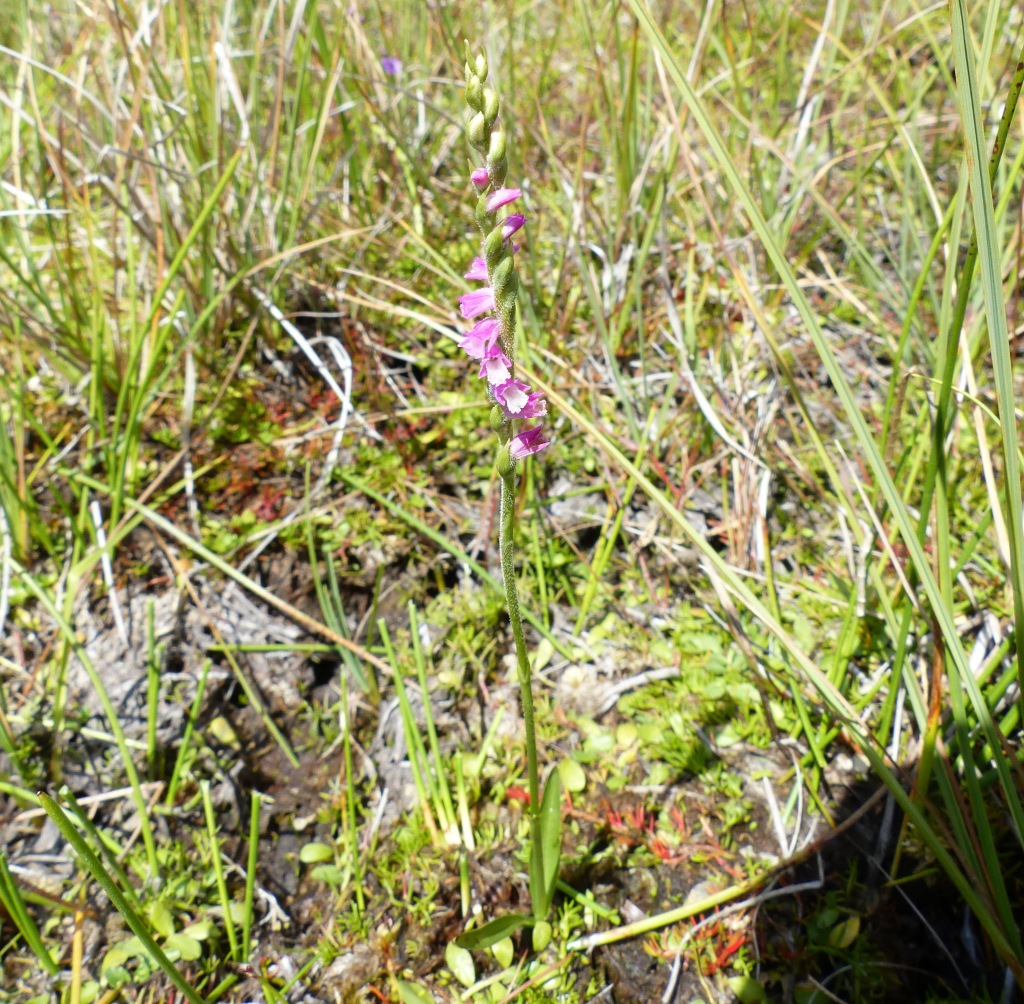Spiranthes australis
(R.Br.) Lindl.Plant usually of swampy ground, arising from several elongated, conical or cylindric tubers. Leaves usually 3–5, linear-lanceolate to spathulate, 8–18 cm long. Flowering stem erect, to 45 cm tall, with 3–5 bracts, pubescent in upper parts. Flowers 10–60, rather dense in spiralled spike, deep to light pink with a white labellum or less commonly all white, sweetly fragrant, subtending bracts ovate, glandular-pubescent on the outside, about as long as ovary; ovary glandular-pubescent, shortly ovoid; sepals and petals 4–5 mm long, petals wider at tips than base, sepals pubescent on outside. Labellum obscurely 3-lobed, white, c. 6 mm long, lateral lobes wider than mid-lobe, base tubular, lamina more or less rectangular, truncate, granular, lower half bulging, margins fringed or toothed, crisped, with a large ovoid gland on each side of lamina base. Column fleshy, c. 3 mm long. Flowers Dec.–Apr.
Wim, GleP, VVP, VRiv, GipP, WaP, Gold, CVU, GGr, DunT, NIS, EGL, EGU, WPro, HSF, HNF, OtR, MonT, HFE, VAlp. Widespread across much of Victoria, except the drier north-west, but seldom common. Grows in damp depressions, swamps or on seasonally inundated stream-banks.
Larger-flowered plants with less tubular labellums are sometimes recognised as S. alticola, which, as the name implies occurs at higher altitudes. However the characters do not seem to be reliable and S. alticola is generally (as here) regarded as synonymous with S. australis.
Entwisle, T.J. (1994). Orchidaceae. In: Walsh, N.G.; Entwisle, T.J., Flora of Victoria Vol. 2, Ferns and Allied Plants, Conifers and Monocotyledons, pp. 740–901. Inkata Press, Melbourne.
 Spinning
Spinning


